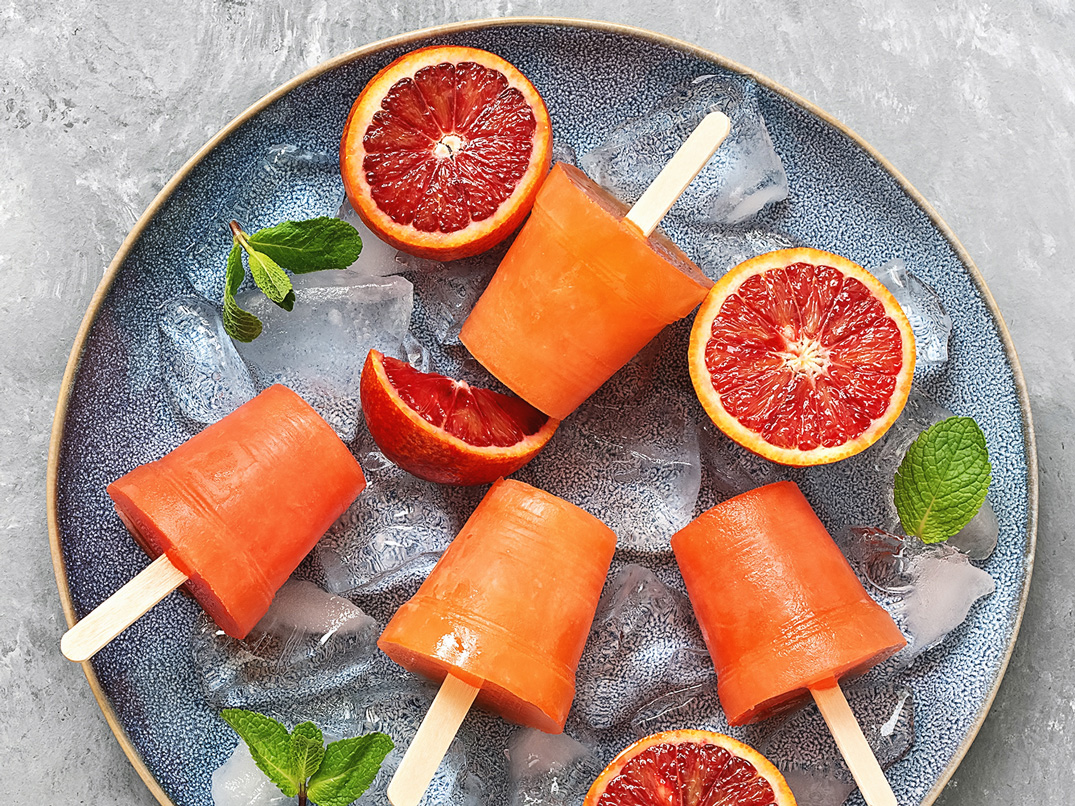The sight of a red-fleshed orange might strike you as unusual. However, for the Sicilians, “blood” oranges are common.
There is nothing artificial in a blood orange’s composition. And the suggestion that regular oranges are cross-bred with pomegranates to achieve the crimson hue and the unique tangy taste is a myth.
The secret behind the red colours of blood oranges
The answer to this puzzle lies in the combination of several factors: cool temperatures at night and sunny and dry weather during the day.
This formula promotes the production of the dark red pigment anthocyanin in plants. The same pigment is responsible for the leaves changing colour in autumn, apples getting red, grapes purple – and some species of oranges becoming crimson.
Blood oranges need a particular climate
Since the correct weather conditions are paramount for anthocyanin production, it is logical that the red-fleshed oranges would naturally only develop in some geographical areas. The southern Italian island of Sicily is famously one of these regions.
While blood oranges are also grown in Spain, China and Pakistan, Italy is still the biggest exporter of blood oranges, as the south Mediterranean climate is the most agreeable for this particular crop.
Apart from being more intense in colour, blood oranges benefit from additional antioxidant properties locked inside the anthocyanin pigment. This kind of orange is described to have light raspberry undertones, too, creating an alternative flavour pallet to the usual orange-coloured cousins.
The three unique kinds of blood oranges and their usage
The most popular varieties of blood oranges include tarocco, sanguinello and moro. The first two types are sweet and juicy, while the latter has stunning and intense pigmentation and a pleasant tart flavour.
Blood oranges are commonly used interchangeably with regular oranges. They add a splash of colour and subtle alternative flavour. Juice or boil them into jams and preserves, garnish and decorate anything from meat or poultry mains to cheesecakes and cocktails. Wherever you bring blood orange – it will be a party pleaser.
Your guests will appreciate this eye-catching blood-orange delight
Try this blood orange sorbet recipe that can be done quickly without an ice cream maker and with just 3 ingredients.
- Set a pan with 250 g / 1 cup of water on low-medium heat and add 200 g / 1 cup of sugar. Simmer and dissolve the sugar completely.
- Set the syrup aside and let it cool down.
- In the meantime, grate some blood orange skin to get about 1 tbsp of zest.
- Press 2-3 blood oranges to obtain 250 g / 1 cup of blood orange juice.
- Mix the juice and zest with the cooled syrup you prepared.
- Transfer the mix to a container and put it in a freezer for 2-3 hours. Make sure to stir and break the big lumps of ice forming in the sorbet every hour. You can also add 1 tbsp of champagne to the sorbet to prevent it from turning into a block of ice.
Thanks to its tangy freshness, blood orange sorbet can be served between courses to clear up the palette or as a treat at the end of the meal.











What do you think?